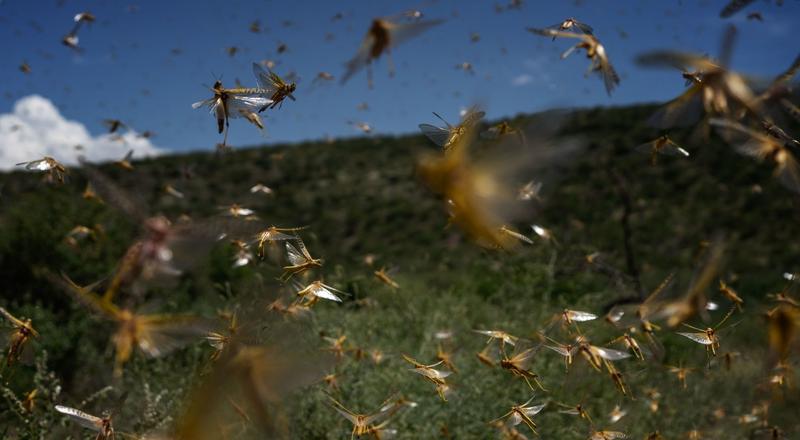 This May 21, 2020 file photo shows locusts that were roosting in trees overnight take flight in the morning in Samburu County, Kenya. (FREDRIK LERNERYD / GETTY IMAGES)
This May 21, 2020 file photo shows locusts that were roosting in trees overnight take flight in the morning in Samburu County, Kenya. (FREDRIK LERNERYD / GETTY IMAGES)
Ethiopia, already struggling to suppress a desert-locust infestation that’s the worst in decades, will escalate efforts to control the insects as it receives two new swarms a day.
Ethiopia currently has only five planes and two drones to survey and spray the entire country, according to the Ministry of Agriculture. While the state treated about 57,000 hectares in September, government surveys show hundreds of thousands of hectares are infested
Five of the Horn of Africa nation’s nine regions -- including Oromia, Amhara and Tigray -- are heavily infested and the government expects to add five planes this week to supplement aerial control measures, according to the Ministry of Agriculture.
“Unless we manage these swarms where they are, they will scatter to different areas and continue damaging livelihoods,” Agriculture Minister Oumer Hussein told reporters on Sunday.
ALSO READ: New study may provide key to controlling locust swarms
More swarms are expected to form in northeast Ethiopia, potentially moving to the eastern Ogaden region and agriculturally productive highlands, the United Nations’ Food and Agriculture Organization warned last week. The infestation is expected to continue until March, it said.
Ethiopia currently has only five planes and two drones to survey and spray the entire country, according to the Ministry of Agriculture. While the state treated about 57,000 hectares in September, government surveys show hundreds of thousands of hectares are infested.
ALSO READ: India takes control measures as locust attacks spreading
Ethiopia has appealed for help from local and international organizations to fight the pests that have been ravaging pastures and farmlands across the region since the start of the year. Locusts can cover as much as 150 kilometers a day and a swarm of about 40 million to 80 million locusts will destroy crops sufficient to feed 2,500 people for a year, according to the FAO.


